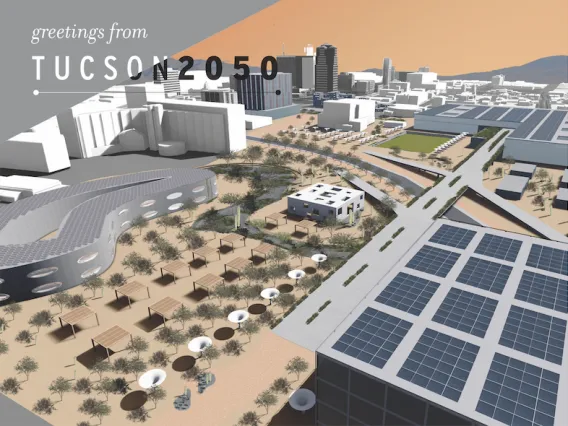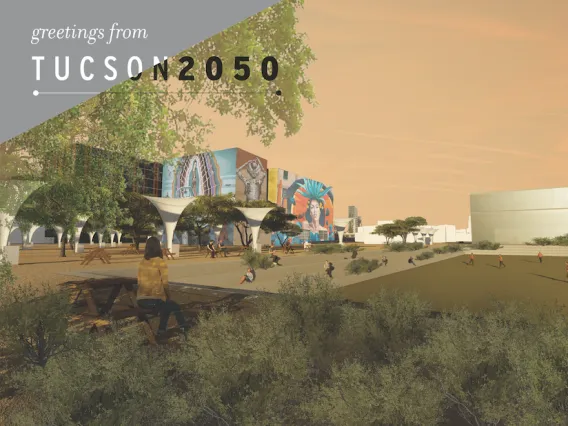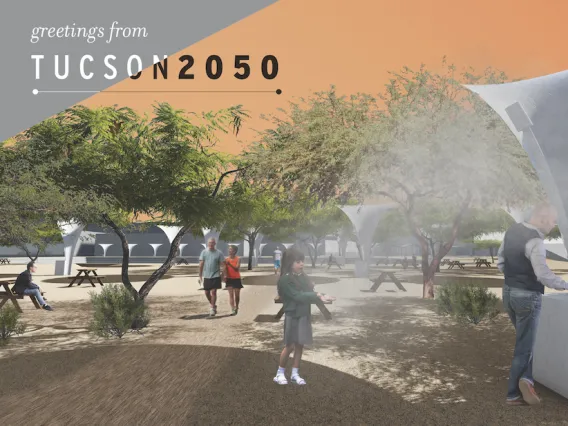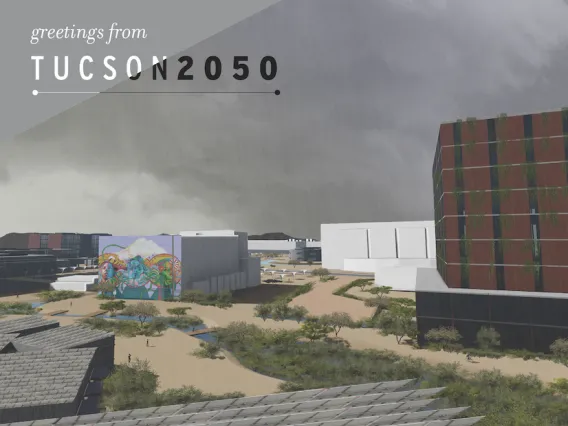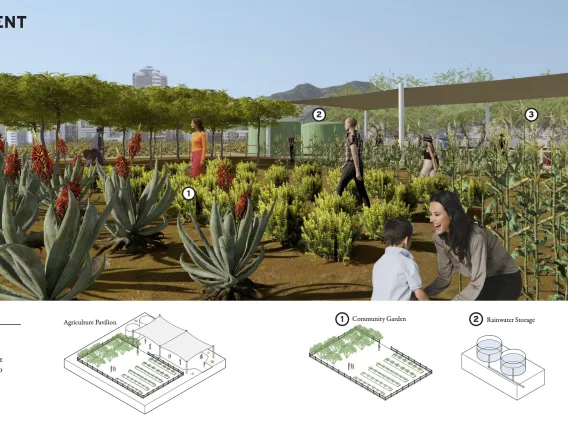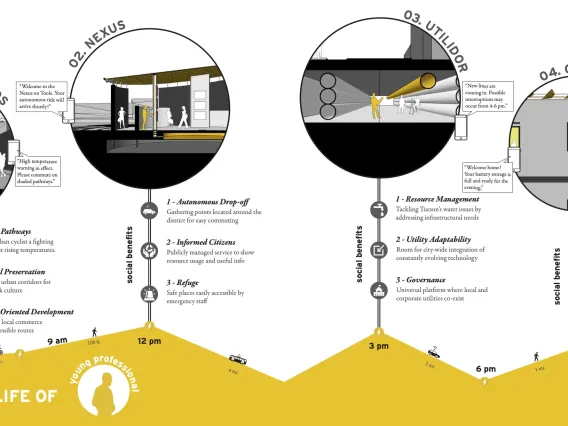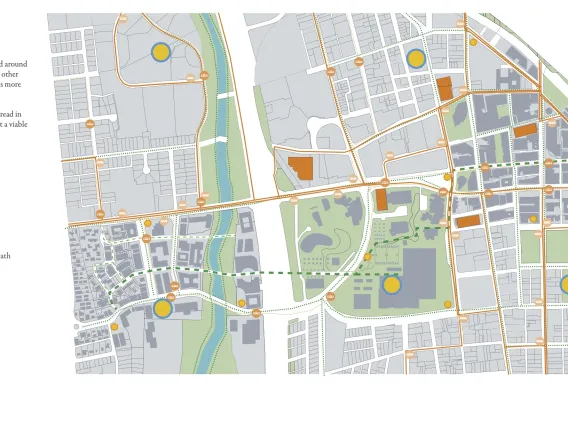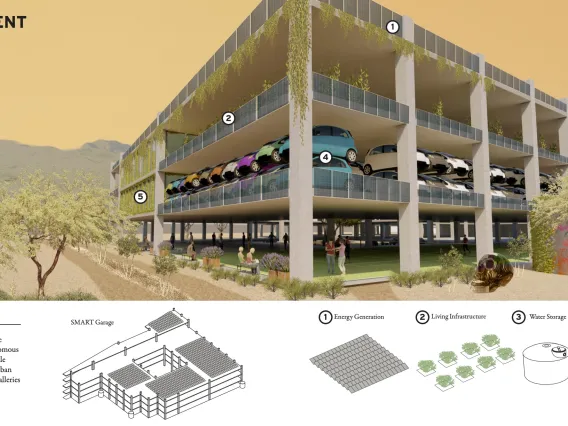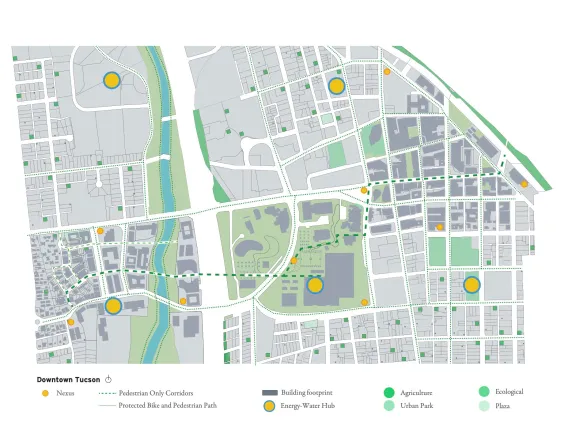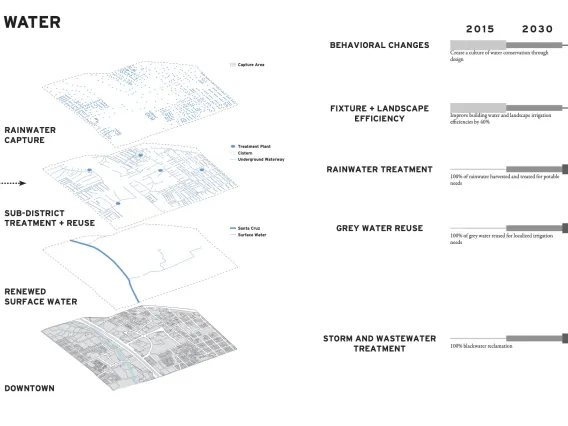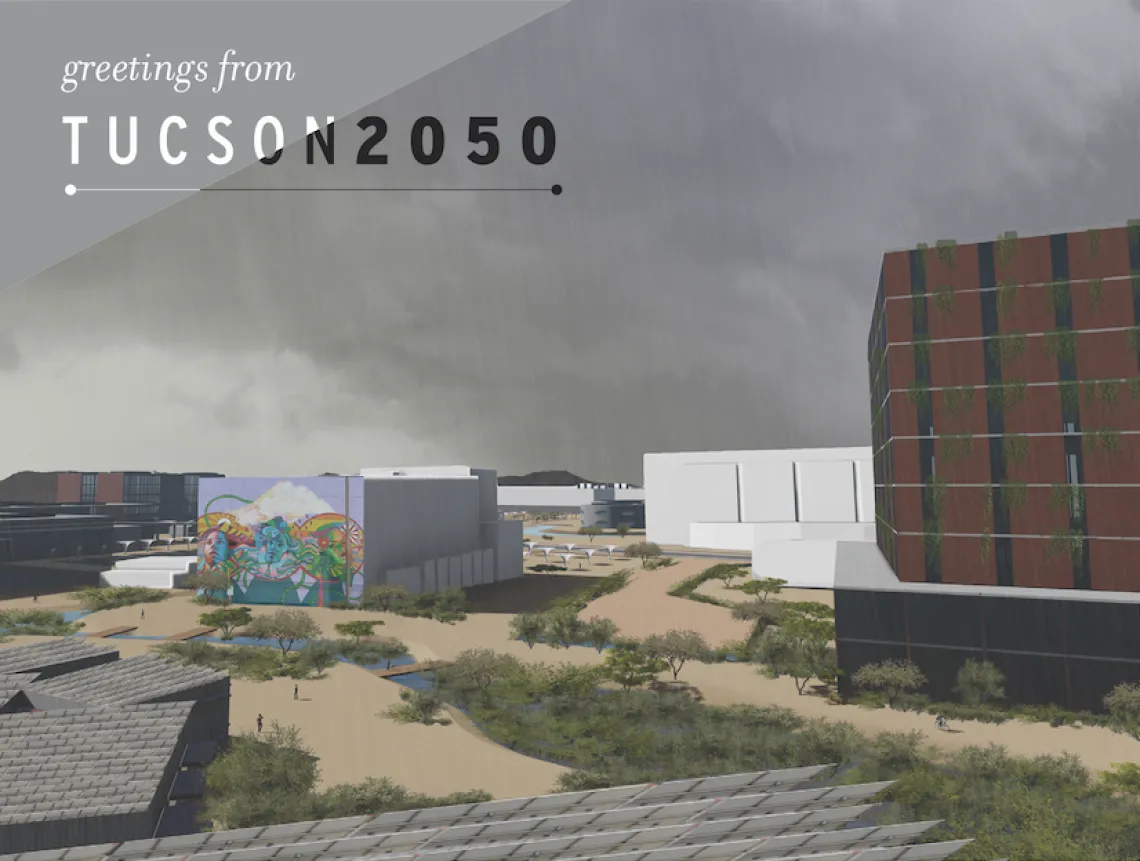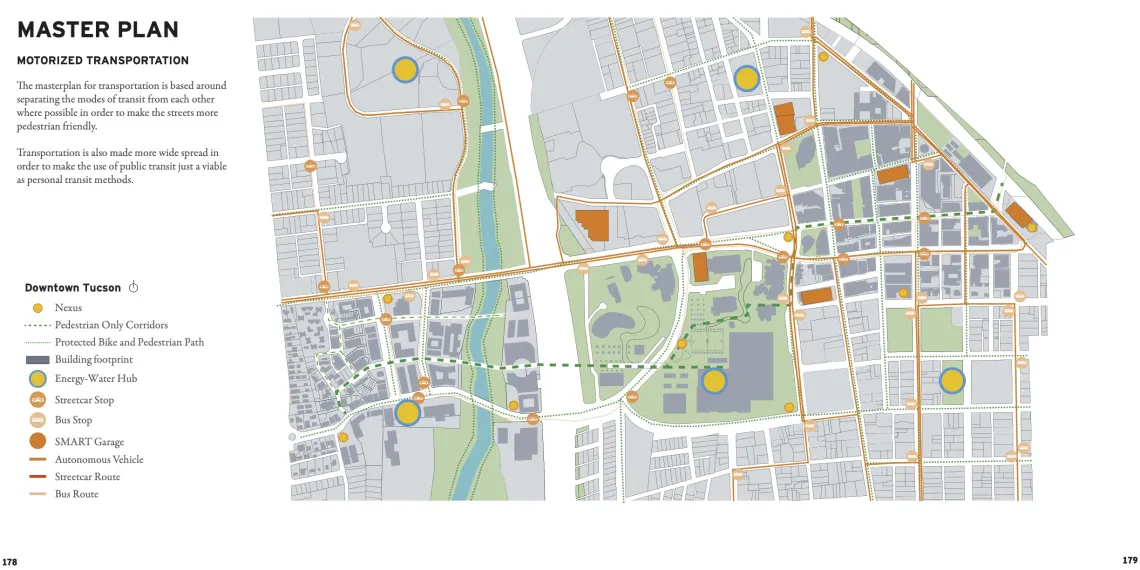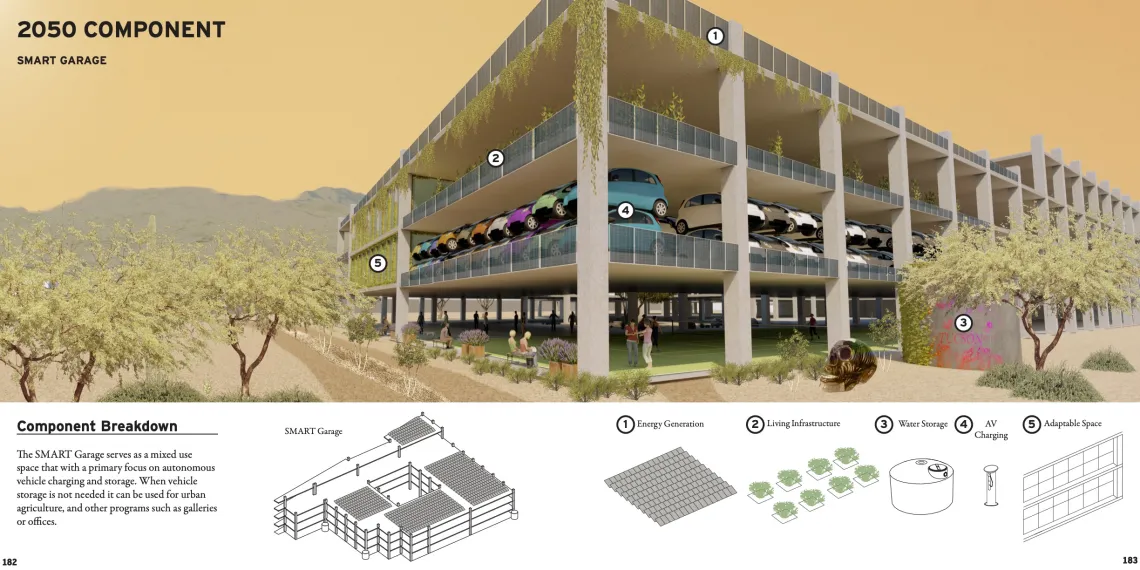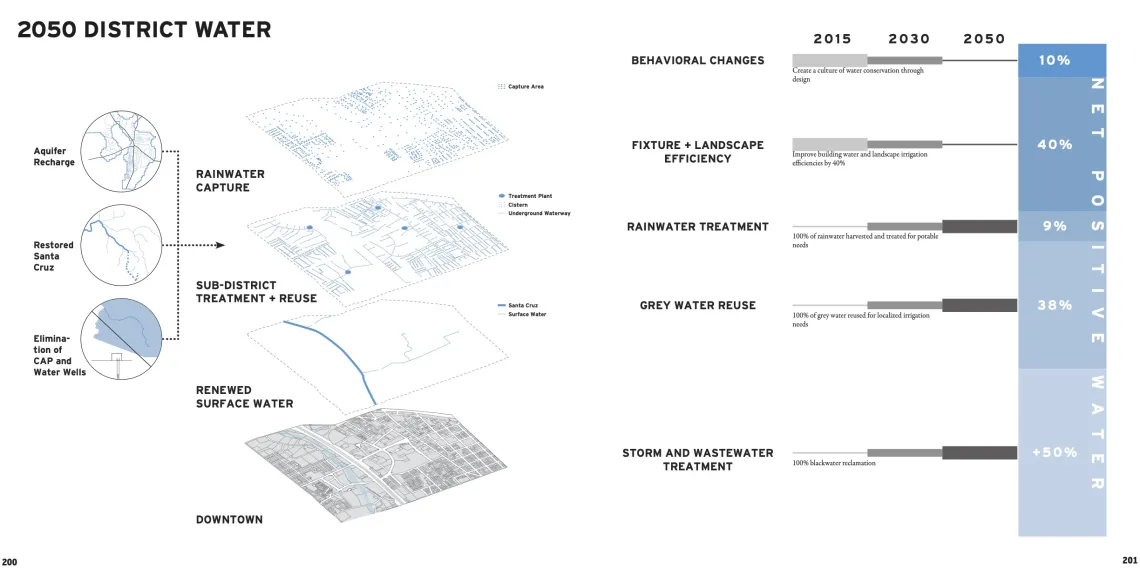As cities are pushed to the forefront of global climate leadership, long-range design and planning are increasingly urgent, yet municipalities face resource constraints. This project offers a replicable model for academia to join with practice and local governments to educate and envision bold solutions to some of our largest urban challenges: climate adaptability, local resiliency, and future livability.

Researchers
- Courtney Crosson, Associate Professor of Architecture
- ARC451a/510f Students of Architecture
Community Partners and Consultants
- GLHN Architects and Engineers
- City of Tucson Environmental Services
- Pima County Transportation Department
- City of Tucson Planning and Development Services
- Pima County Office of Sustainability and Conservation
Project Details
Budget: $10,000, funded by GLHN Architects + Engineers
Where: Tucson, Arizona
When: 2017 - 2018
Project Overview
In 2017, a public-private-academic partnership was formed to achieve year 2050 carbon and water neutrality targets without sacrificing either livability or projected growth in downtown Tucson, Arizona. The semester-long project was led by one professor and ten students, sponsored by a local engineering firm, and supported by city and county staff. Case-study research, spatial mapping, quantitative analysis, and design inquiry were used to create three components: (1) district energy, water, and living infrastructure, (2) district land use plan with sustainable building prototypes, and (3) three sub-district master plans with rendered visions. The broad-based 2050 plan was disseminated through an electronic and printed 204 page book.
Project Outcomes: Exhibition of the work in downtown Tucson and a 250 page publicly available book of the work.
Project Gallery
Click image to view larger size and begin slideshow:


